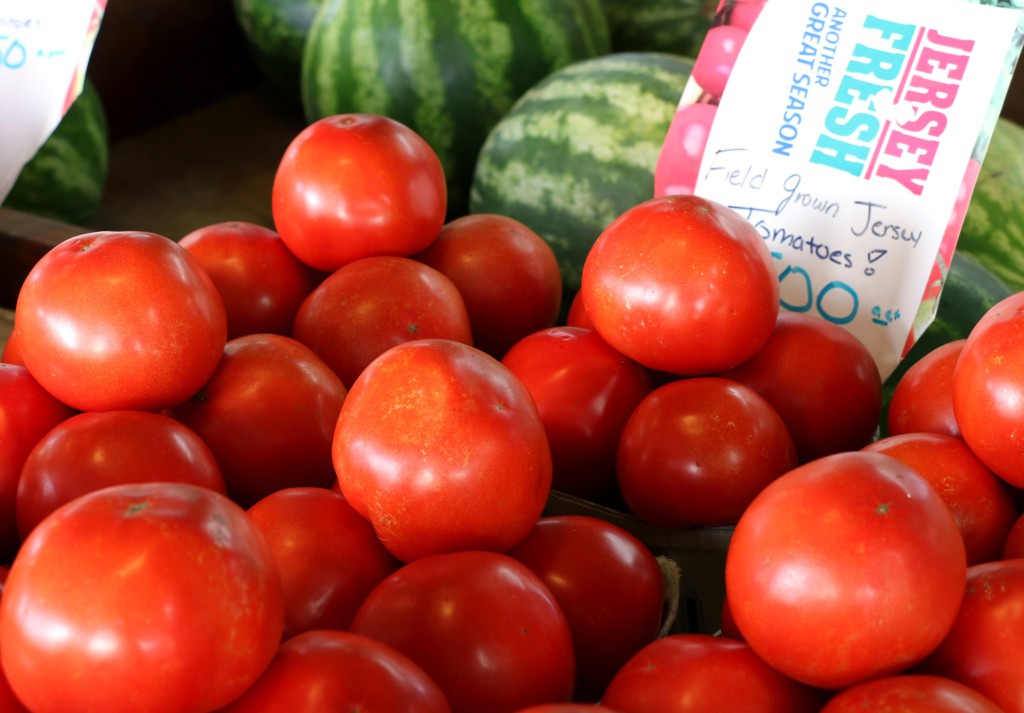 September in southern New Jersey is invariably hot and humid, the remnants of August’s dog days hanging on, tenacious and ornery. It is the time when the tomato fields that bordered our house in rural Mickleton began to take on the smell of post-harvest rot that would grow to a reek, then dwindle as the nights cooled, and disappear at last when the remains were ploughed under. It is a distinctive smell that lurks at the edge of my memory. I haven’t smelled it since, but I would instantly recognise it. I don’t miss it, but the echo of it evokes sadness for something I do miss.
September in southern New Jersey is invariably hot and humid, the remnants of August’s dog days hanging on, tenacious and ornery. It is the time when the tomato fields that bordered our house in rural Mickleton began to take on the smell of post-harvest rot that would grow to a reek, then dwindle as the nights cooled, and disappear at last when the remains were ploughed under. It is a distinctive smell that lurks at the edge of my memory. I haven’t smelled it since, but I would instantly recognise it. I don’t miss it, but the echo of it evokes sadness for something I do miss.
We siblings and cousins used to have tomato fights, wrecking plants in remorseless horseplay and score-settling that left us covered in bruises and pulp, and later, most daringly, that stink. Sometimes it was so bad we hosed off behind the shed in an attempt to avoid trouble, our wet clothes a giveaway. Mostly we got away with it.
We regarded those tomatoes and the fields they grew in as ours. We plundered them freely to fry green or slice ripe, or fill with ham salad. I remember how good they were, how glad we were to have them. I remember the plenty.
We trespassed in all seasons. I lost a new boot to sucking mud after taking a shortcut one spring and limped home one shoe off, one on, diddle diddle dumpling style. Kitty once got both legs stuck, a quicksand-evoking emergency requiring Amy to run for help; and there were other humiliations and rescues, adventures and liberties, on the playground-battleground of those fields at Still Run.
The farmer who grew the tomatoes either didn’t know, or let it go. We knew him as a gentle Quaker, hardworking at the plough and in the local pork house his family had run since the Civil War. We were just one of many pests. He rented the acreage from the same landlord who owned the 19th century farmhouse we lived in. Sometimes he planted green peppers (which our mother would stuff with rice and ground beef); or feed-corn (which we once raided for a barbecue not realising it was grown for the local dairy herds); and one summer there were cantaloupe (that was a sweet year); and always a winter cover-crop of alfalfa; but usually it was tomatoes.
Puerto Rican migrant labourers did the picking by hand over a period of weeks as the fruits ripened under the sun on plants that grew about as tall as the shortest of us kids. We would see the men arrive sitting or standing in the back of flat-bed trucks, and I remember liking to watch when they lifted their baskets high to pour into the huge containers parked at the edge of the fields. I made a school-bus friend named Yolanda, the daughter of a migrant family, who would get on with her little brothers at the stop outside a concrete housing block that shocked us with its poverty. I was bereft when she disappeared a few weeks later, her family moving on for the next crop.
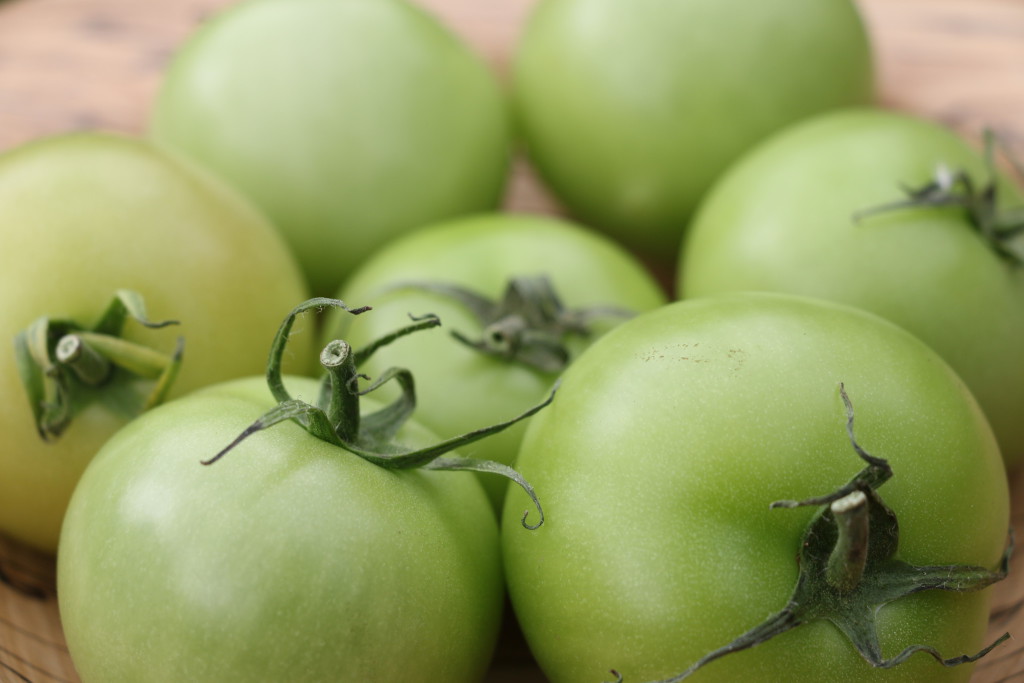 These were not ‘heirloom’ tomatoes. This was the 1960s – the era of Silent Spring, Vietnam, the burgeoning civil rights and women’s movements. So much was amiss, but there was no need yet for a renaissance in tomatoes with flavour, for those sun-ripened, imperfectly round, meaty red beefsteaks were so good we looked forward to them all year, and they were the norm.
These were not ‘heirloom’ tomatoes. This was the 1960s – the era of Silent Spring, Vietnam, the burgeoning civil rights and women’s movements. So much was amiss, but there was no need yet for a renaissance in tomatoes with flavour, for those sun-ripened, imperfectly round, meaty red beefsteaks were so good we looked forward to them all year, and they were the norm.
Jersey tomatoes were famous for flavour, a matter of pride for the Garden State, but they were in fact a South Jersey commodity, grown in the predominantly agricultural counties with their nearly contiguous fields interrupted by small townships and rural back roads. Tomatoes were the test of quality for the colourful roadside stands you could find outside every farm in the days before such sights were considered quaint, long before farm shops became trendy or were even thought of. Our north Jersey relatives would stock up on their visits with bushel baskets of peppers, eggplant, corn and peaches that were so much cheaper and fresher than they could get at home – and of course those bootleg tomatoes.
We didn’t know in those days that we were taking for granted the golden age of the Jersey tomato. That taste, that world, has gone, just as the old Mickleton house is now the smallest in an up-market housing development, the dirt road now overgrown, the track that divided our front yard from the tomato fields now a neighbourhood street.
I looked into the Jersey tomato in the way some people would hunt down their family tree, for on visits home over the years I no longer saw that tomato – a loss we all lamented. What we could buy was more like a supermarket tomato – picked green and gassed to a pretence of ripeness [i]. A rainbow of heritage tomatoes improved matters considerably in the nineties, thank God – but where was the tomato of our Mickleton years – that ‘regular’ tomato so ingrained in memory, so desirable, and once the only tomato we knew, the only one we needed?
I now understand that the end of our own golden age in Mickleton coincided with the demise of the Jersey tomato. By the early seventies, the small-scale family farming that had been common for generations in south Jersey could no longer hold its own against large agribusiness, and land was worth far more for development. The acres upon which our house stood were sold in 1973. We moved to town, gaining a better school system for my younger sisters, but losing our country playground and its expansive freedoms.
Our sun-ripened tomatoes were the last of those flavoursome commercial varieties that flourished between the 1930s and 1970s, before mechanised harvesting and centralised processing demanded high-yielding, hard skinned fruits with long shelf-life, suitable for transport – requirements that wholly superseded flavour. Our personal story was part of a bigger economic and technological story. Our family upheaval was part of a global upheaval, had we but known it.
The tomatoes from our fields were destined for the processing plants of Campbell’s and its tomato soup, which achieved its iconic status as an all-American convenience food before Andy Warhol made it a commentary on art and popular culture. Campbell’s was the largest producer of soup in the world, and its flagship cannery was in the city of Camden, just across the Delaware River from Philadelphia’s industrial centre and less than 20 miles from our rural idyll. Camden was and still is one of the poorest and most troubled cities in the country. It was also, for over a century, the working engine of the industry that shaped the tomato, the South Jersey economy and landscape – and many lives.
There are records of tomatoes being grown in South Jersey from around 1830, and by the 1860s and 70s, the industry was booming, with small canneries in every township, supplied by local fields [ii]. What became Campbell’s was one of these: in 1869 [iii], a Philadelphia produce merchant named Joseph Campbell became joint partner of a concern that had been going since 1860. Campbell bought out the business and attracted new partners and investment from a wealthy Pennsylvania family. The company built its large Camden factory in 1896; and in a turning point a year later, chemist John Dorrance, nephew of the investor, Arthur Dorrance, developed the process for condensing soup. This breakthrough decreased packaging and transport costs by almost two-thirds – a stroke of technological and marketing genius that allowed Campbell’s to offer a much cheaper product and dominate the competition by the turn of the century.
John Dorrance went on to buy the company and become its president, and it was he and his family who ran it, according to historian Daniel Sidorick [iv], as an aggressively profitable concern with a focus on innovation and cost-efficient micromanagement over every detail of operations: from which tomato varieties farmers could grow, and how much fertilizer and pesticide they should apply, to every step within the factory [v] and the distribution and marketing of its products. The company’s cost-efficiencies extended to its labour relations and dealings with suppliers; it firmly resisted employee advancement and kept margins for farmers so low they failed to pay their labourers a living wage.[vi]
In the 20th century, the state university, Rutgers, was a leading breeder of commercial tomato varieties, working with companies such as Campbell’s. Most of these hybrids were for the processing market, though their flavour was also excellent fresh (this was due not only to superior varieties, but because they were ripened in the fields.[vii]) In 1934, the ‘Rutgers’[viii] was introduced, and quickly became the standard processing tomato that made New Jersey’s reputation. It was the most widely grown commercial variety between 1950 and 1970, accounting for 60 to 70% of all crops worldwide.[ix]
Dominance of the few varieties that were grown commercially make it likely that the tomatoes growing in the fields of our childhood were the 1934 Rutgers (it was a mid-season tomato), and possibly, given the length of the season, also the early ‘Moreton’[x] and late-season ‘Ramapo’[xi] – and/or the ‘KC-174’[xii] that was developed for canning in 1956 by Campbell’s own tomato breeder, George B Reynard. The University continued to improve its 1934 best-seller, but taste remained a serious consideration in the few refinements that made it to market.
In 1970, when we kids were hurling tomatoes at each other in Mickleton, South Jersey was the East Coast tomato capital and one of the largest producers in the country, with over 20,000 acres [xiii] devoted to producing over 300,000 tons of tomatoes,[xiv] 80% of which was going to the Campbell’s plant in Camden for tomato soup (during the eight-week tomato harvest, this was the factory’s sole product [xv] ).
In 1979, by which time I had graduated from college and my sisters were applying to university or studying for their degrees, Campbell’s stopped using Jersey tomatoes, choosing instead to import tomato paste from California [xvi]. This was done to streamline operations and downsize the workforce in Camden, and it was less contentious for the company than buying local tomatoes grown by farmers who were unhappy with their margins, and picked by migrant labourers whose rights were the subject of increasing advocacy in the public gaze. [xvii] Some farmers suffered hardship, most turned to other crops, and the good-tasting Rutgers tomato went out of production and was virtually lost. Many migrant worker families like Yolanda’s moved on to different crops, or to the sites where the big tomato growers were relocating, mostly Florida, Mexico and California.
Campbell’s closed their Camden factory in 1990 and relocated operations to new highly automated plants in Texas and North Carolina [xviii] (though its corporate headquarters remains to this day in Camden). By 1999, production of tomatoes in New Jersey had declined to 5,500 acres, all but 1,500 of which were for the fresh market.[xix] That same year, the New Jersey Tomato Council trademarked the name, ‘Jersey Tomato’ [xx] long after the tomato that made the state’s reputation ceased to exist.
New Jersey is today still a significant producer of tomatoes, nearly all for the fresh market.[xxi] Land devoted to the crop had decreased to under 3,000 acres in 2015, but yields are higher, so it’s still a high-value crop for the smaller number of farmers who grow them. But long gone are the vast tracks of orchards and fields I remember. You still see farm stands selling tomatoes, but they don’t taste the same; and many of the smaller farmers, and the sense of space and abundance we remember, has gone for good.
There were many factors that led to the loss of our remembered tomato – from the labour disputes and boycotts of Campbell’s; resistance to investing in better lives for migrant workers (mostly this led in New Jersey to growing less labour-intensive crops); higher State water-quality standards following massive clean-up campaigns of notorious toxic sites; and of course the economies of scale afforded by cheap fuel and proliferating interstate highways, which made transporting produce to centralised mass processing plants in other states cheaper than staying local. New varieties stood up to mechanised harvesting, transport and storage. These were new priorities, and flavour did not feature in a single breeding trial during this period [xxii]. It was the industrialisation of the entire food supply chain that changed the flavour of the tomato, and not just in South Jersey.
REGENERATION OF THE ‘JERSEY TOMATO’
It’s on a more hopeful note that the story continues, for ‘consumer power’ has to some degree at least rejected the tasteless tomato. Heirloom tomatoes grown 100 years ago re-entered the market in the 1990s, welcomed by people who had been deprived of tomatoes with flavour and were willing and able to pay a premium for an alternative; but the heirloom’s low-yield, fragility, problems with fungal disease, and tendency to split, were problematic for commercial growers, who earned far less for them than for other tomatoes by the time such wastage was taken into account.[xxiii] They remain a niche market today, but one profitable enough for growers to continue offering.
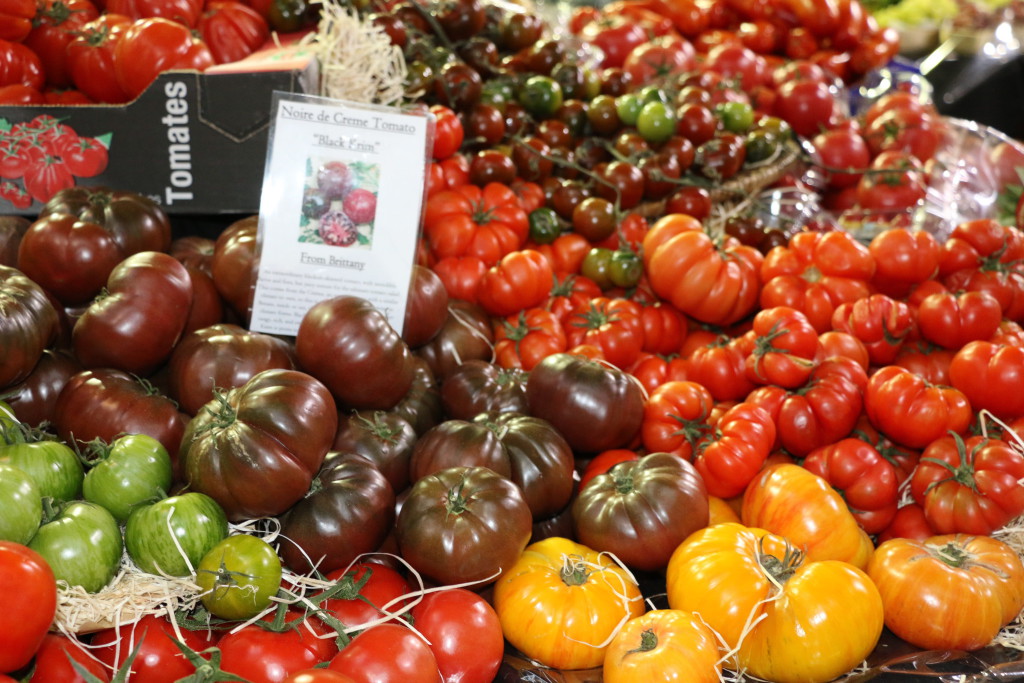 This was the period when those who had lived with the old Jersey tomato still remembered what it tasted like, and wanted it back.[xxiv] This collective taste memory had some influence, for the industry realised it was missing a trick, and breeders embarked on developing a tomato that would be commercially viable, but still have flavour consumers would approve.
This was the period when those who had lived with the old Jersey tomato still remembered what it tasted like, and wanted it back.[xxiv] This collective taste memory had some influence, for the industry realised it was missing a trick, and breeders embarked on developing a tomato that would be commercially viable, but still have flavour consumers would approve.
Today, in 2016, Rutgers introduced to much fanfare a tomato said to have the old-fashioned taste remembered by those who knew the Jersey tomato in its heyday [xxv]. They worked with varieties that had been most popular between 1950 and 1970, including genetic material discovered in Campbells’ laboratories said to be from the parent plants that were used to develop the original Rutgers hybrid. Forgotten for decades and considered lost (Rutgers themselves did not safeguard the seed) [xxvi], this discovery led to five new candidate hybrids by 2014, and public taste-trials led to the choice of one to be put into production. The ‘Rutgers 250’ seed is now available to the home gardener, and a limited supply is being sold to farmers.[xxvii]
We shall see if this helps to begin a renewal of commercial tomatoes with flavour, or if it is taken up mostly by those who grow their own and want a more robust alternative to heirloom varieties. If these new Rutgers 250 tomatoes are to be picked in the ‘mature green’ stage [xxviii] and transported miles to mass processing plants, it will have to be superior indeed to stand up to the claims. I will keep an open mind as to whether it will make a difference to the tomato most of us eat, and hope to trial some in my own garden in the meantime, if the English sun will cooperate.
The poor, abused and maligned tomato is symbolic of so much that went wrong in post-war industrialised agriculture and our modern food system. One Rutgers plant scientist, Jack Rabin, calls it “a sort of a whipping boy, a stand-in for every disappointing thing modern agribusiness has done to the food we eat.”[xxix] Not without reason.
GOING BACK IN TIME
Plant breeders are looking at flavour these days, and going back to older varieties and even the wild ancestors of our current commercial crops to bring new genetic material into what is, in the case of the modern tomato, one of the most inbred crops we have managed to develop throughout the history of agriculture. A major international study was recently published in a leading scientific journal that reveals the genetic sequences of 360 varieties of tomato, from ancient to domesticated – far more than was previously available.[xxx] This makes it possible for breeders to select traits from a much greater diversity of genetic material, and there are those across the international community who are on a quest for varieties that will have both taste, and the qualities that modern growers and processors need. There is the desire among plant geneticists to understand “what went wrong with the flavour of the tomato”, and to develop the tools to fix it. [xxxi]
The sacrifice of taste may seem frivolous compared to the sacrifice of the people who laboured in the fields and the factories, yet the two failures arise from the same disregard of every factor besides profit – determined, it must be acknowledged, in no inconsiderable part by what we consumers will pay. It is a consolation that there are signs of progress toward fair trade, and towards taste again, but I’m not sure we can count on industry having a culinary or moral epiphany. I suspect we will only have taste in the tomatoes most of us will eat if we insist on it, and are willing to pay for it.
Good tomatoes are the most beautiful of summer’s bounty, and they are extremely good for us.[xxxii] Les tomates anciennes I’ve feasted on in salads in the south of France, the Costoluto Fiorentino I’ve eaten in Italy with nothing more than salt and olive oil, the heirloom beauties I’ve chosen from the markets in New Jersey and North Carolina, the Gardener’s Delights I’ve been given by my green-fingered friends, the single pink Brandywine I once managed to ripen in my English cottage garden – and even the best cherry toms I can sometimes buy in the supermarket – are exquisite treasures I never want to be without. These tastes are not the same as the tomatoes of my childhood, but they capture for me the beauty of life, and I am immensely grateful that someone safeguarded them, and that resilient producers make the effort to grow them, despite the numerous challenges.
Amy gave me some years back the little book, Tomatoes, by Lee Bailey, which I treasure for her inscription, “How far we’ve come from the tomato fields of our childhood.” Far in miles, yes, and in time, too, but memory being what it is, neither time nor distance prove a barrier to feeling those fields like they are still here – around the corner out of sight, but in the neighbourhood.
When I take that book from the shelf it invariably takes me back. I can sense hairy foliage and recall the green-leaf-smell that’s objectionable to some, compelling to me. I can feel the taut ripeness with its slight give and altogether different perfume of red flesh, jelly and juice. I can just about smell the autumnal decay and remember how I held it at bay, breathing through my mouth, covering my nose with hands smoother and smaller than they are now. This retrieves in turn the manic giggle, the held breath, the tautness of hiding, ready to spring – waiting to strike or be struck, to win or lose. We occupy multiple time zones in the geological strata of our lives. As Faulkner said, “the past isn’t dead. It’s not even past.”
It is there, perhaps, where we may reclaim what we’ve lost; and our collective taste memories can help us. These memories have some power beyond ourselves. They can be the guardians of time, of quality and authenticity.
∗∗∗∗∗
MORE FACTS ABOUT THE TOMATO
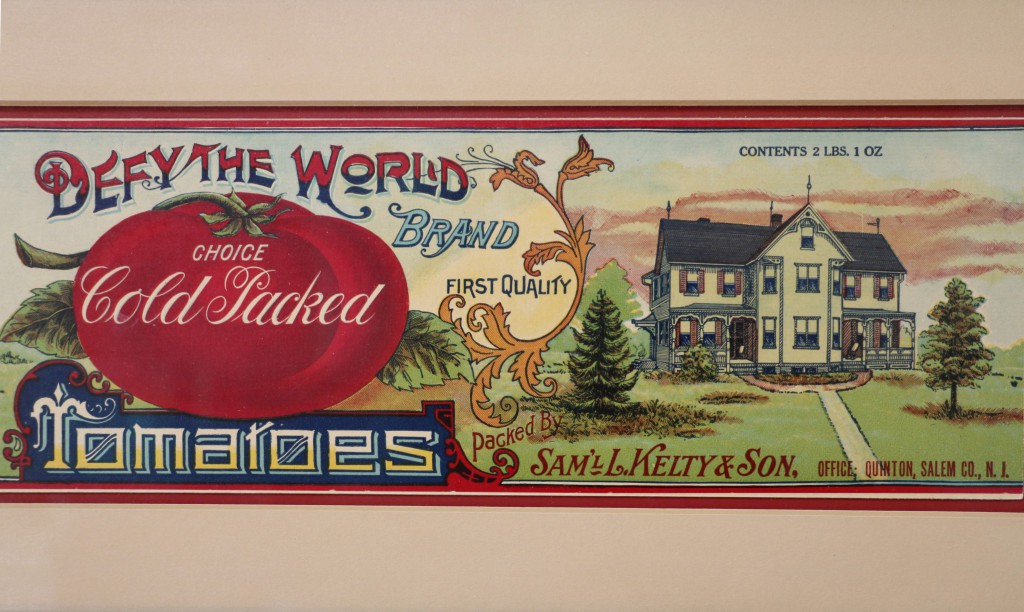 In the 1890s, a brand of canned tomatoes called, “Defy the World”, was produced by the Quinton company, in Salem, New Jersey, a few miles from Mickleton. My parents appreciated the comic hyperbole of this piece of local history and have an original old label framed on their kitchen wall. We speculate that the defiance may have been directed at their competitors in the tomato business, or at those who may still have been reluctant to eat tomatoes. Research continues…
In the 1890s, a brand of canned tomatoes called, “Defy the World”, was produced by the Quinton company, in Salem, New Jersey, a few miles from Mickleton. My parents appreciated the comic hyperbole of this piece of local history and have an original old label framed on their kitchen wall. We speculate that the defiance may have been directed at their competitors in the tomato business, or at those who may still have been reluctant to eat tomatoes. Research continues…
- Tomatoes are very nutritious. They are high in lycopene, the most powerful antioxidant to have been measured in food. They are also one of the vegetables that are actually better for us eaten cooked than raw, as their nutrients can be better absorbed. Sarah Raven advises to leave the skins on, where the lycopenes are concentrated, and always to have a small amount of oil with tomatoes, as lycopene is fat soluable. She also recommends eating broccoli with tomatoes, as the interaction between the two vegetables makes them more nutritious. [Reference: Sarah Raven, Good Good Food, Bloomsbury, 2016; page 142.]
- Food historian Andrew F Smith relates evidence of the tomato first entering the early British colonies in the Carolinas with slaves from the Carribbean. He believes the tomato then travelled north from the Carolinas to Delaware, Maryland, Pennsylvania and New York before being eaten in New Jersey. [Reference: The Tomato in America. Andrew F Smith, University of South Carolina Press, 1994; page 25-26.]
- Tomato historian Andrew F Smith quotes the editor of a New Jersey farming journal who wrote: ‘The tomato was long grown in our gardens as an ornamental plant, under the name of Love Apple, before being used at all as a culinary vegetable. About 1827 or ’28 we occasionally heard of its being eaten in French or Spanish families, but seldom if ever by others.’”[Reference: The Tomato in America: Early History, Culture and Cookery, by Andrew F. Smith, University of South Carolina Press, 1994; p 32.]
- Tomatoes had long been grown for their decorative qualities, but were considered poisonous. The tomato is a member of the Solanaceae family, which also includes the poisonous deadly nightshade as well as the edible potato. The tomato’s dangerous reputation may relate to the use of lead plates and lead-glazed ceramics, which may have caused leaching on contact with the high acid content of some tomatoes. [References: The Tomato in America. Andrew F Smith, University of South Carolina Press, 1994; page 59-60. And: Annabelle Smith, June 18, 2013: “Why the Tomato was Feared in Europe for 200 Years”, in smithsonian.com http://www.smithsonianmag.com/arts-culture/why-the-tomato-was-feared-in-europe-for-more-than-200-years-863735/?no-ist ]
- Acceptance of the tomato as an edible commodity was slow to come to the new United States, lagging behind Britain and Europe, but it was known by a few, including Thomas Jefferson, who grew it at Monticello and served it to State visitors. In the early 19th century, a few American farmers and businessmen began campaigning to develop a market for the fruit. For the state so closely associated with the tomato, New Jersey[i] was in the early years slower than neighbouring states to accept the fruit as edible. [Reference: The Tomato in America. Andrew F Smith, University of South Carolina Press, 1994; page 7. ]
- Whether the foliage and stems of tomatoes are poisonous is still in contention, but food scientist Harold McGee thinks not, and makes a tomato sauce containing the leaves after a recipe from Paul Bertolli of Chez Panisse. Jamie Oliver seldom removes the stem when he cooks with tomatoes. The plants contain solanines, one of the alkaloid compounds also found in potatoes that can turn them green on exposure to light (in which case they should not be eaten in quantity; there is little evidence that the flesh of the potato contains dangerous concentrations of toxic compounds, though green skins have been found to have a greater amount.) The consensus on the tomato plant, McGee says, seems to be that it would only be harmful if eaten in great quantity. [References: On the tomato: The New York Times, Harold McGee: “Accused, yes, but probably not a killer”, 28 July 2009; and on the potato: The Curious Cook: “Green potatoes may not be as toxic as we thought,” 2006.
- In 1812, the first known recipe for ketchup was published in Philadelphia by Dr James Mease, botanist and physician. [Reference: The Tomato in America. Andrew F Smith, University of South Carolina Press, 1994; page 30.]
- In 1893, the Supreme Court of the United States declared the tomato a vegetable for trade purposes, though it is botanically a fruit. [Reference: “When the Supreme Court decided tomatoes were vegetables”, by Jess Jiang, NPR, 26 Dec 2013:]
- Edward R. Murrow’s “Harvests of Shame” documentary about the abuses faced by farm workers in Florida, North Carolina and New Jersey, was aired on CBS during Thanksgiving, 1960. Dan Rather reported in 1995 that little had changed. [Reference: http://www.cbsnews.com/news/the-growing-demand-for-fair-food/ ]
- “In 1978, the average annual income for a farmworker’s family of four was $3000, over 40% below the poverty line.” Quoted from “Puerto Rican migrant farmworkers: an untold story”, by Bonilla G Santiago, In Migr World Mag. 1986;14(4):14-8.
- The Fair Labor Standards Act of 1938 excluded farm workers until 1966, the year César Chavez and Dolores Huerta created the United Farm Workers Union after years of activism. The Migrant and Seasonal Agricultural Worker Protection Act of 1983 improved legal protections, but did not grant rights to join labour unions. This 1983 law is the current legislation governing the rights of seasonal and farm workers. [References: https://www.farmworkerjustice.org/advocacy-and-programs/us-labor-law-farmworkers And: https://en.wikipedia.org/wiki/United_Farm_Workers ]
- Current immigration debates on the legal status of immigrant farm workers continue, and private organisations such as Farmworker Justice continue to advocate for “the end of discrimination in employment law and the exercise of rights without fear of retaliation.” Reference: https://www.farmworkerjustice.org/about
- The Fair Food Standard Council was established in 2011 as a voluntary partnership with farmers, major retailers, and agricultural workers, to attempt to reconcile worker rights and business interests in the tomato industry: http://fairfoodstandards.org/15SOTP-Web.pdf
- Cooking with Campbell’s soup: Campbell’s excelled in marketing, and boosted sales of their products by promoting the use of their condensed soups unreconstituted in recipes, e.g., ‘mystery cake’, made with tomato soup; ‘green bean casserole’, a Thanksgiving classic made with canned beans, canned fried onions, and mushroom soup. My mother used mushroom soup in her stuffed peppers, and I remember my grandmother steaming a whole cauliflower and covering it with Campbell’s cheddar cheese soup. Campbell’s published its first cookbook, Helps for the Hostess, in 1916. http://www.encyclopedia.com/social-sciences-and-law/economics-business-and-labor/businesses-and-occupations/campbell-soup
- The use of lime in storing vegetables: My mother recalls a white powder being scattered over the tops of the huge transport containers every evening that held tomatoes picked from the fields in Mickleton. It took a few days for the containers to be filled, so it is possible this was something to stop the fruits from deteriorating before they could be driven off to the factory. I am not able to verify what it was, although there was speculation in my family that it was lime. Lime is used today in storage of fruit and vegetables, although not in direct contact with them (unlike the powder my mother remembers). Rather, thick paper bags of hydrated lime are placed in proximity to vegetables and fruit in atmospherically controlled storage. The lime absorbs carbon dioxide the produce gives off in the process of ripening and this promotes a higher ratio of oxygen in the atmosphere, thus slowing down maturation. This link from the National Lime Association explains more: http://lime.org/lime-basics/uses-of-lime/other-uses-of-lime/chemicalindustrial-uses/
[i] “Despite the presence of tomatoes in Pennsylvania and New York … the earliest primary source to pinpoint the tomato in New Jersey was George Perot Macculloch’s farm journal, which noted the planting of tomatoes from 1829 onward in Morristown. Tomatoes were also grown in Salem by 1829, and by 1830, they were abundantly grown along the Delaware River valley. James Mapes, from Newark, New Jersey, and the editor of the Working Farmer, stated that, ‘The tomato was long grown in our gardens as an ornamental plant, under the name of Love Apple, before being used at all as a culinary vegetable. About 1827 or ’28 we occasionally heard of its being eaten in French or Spanish families, but seldom if ever by others.’” From The Tomato in America: Early History, Culture and Cookery, by Andrew F. Smith, University of South Carolina Press, 1994; p 32.
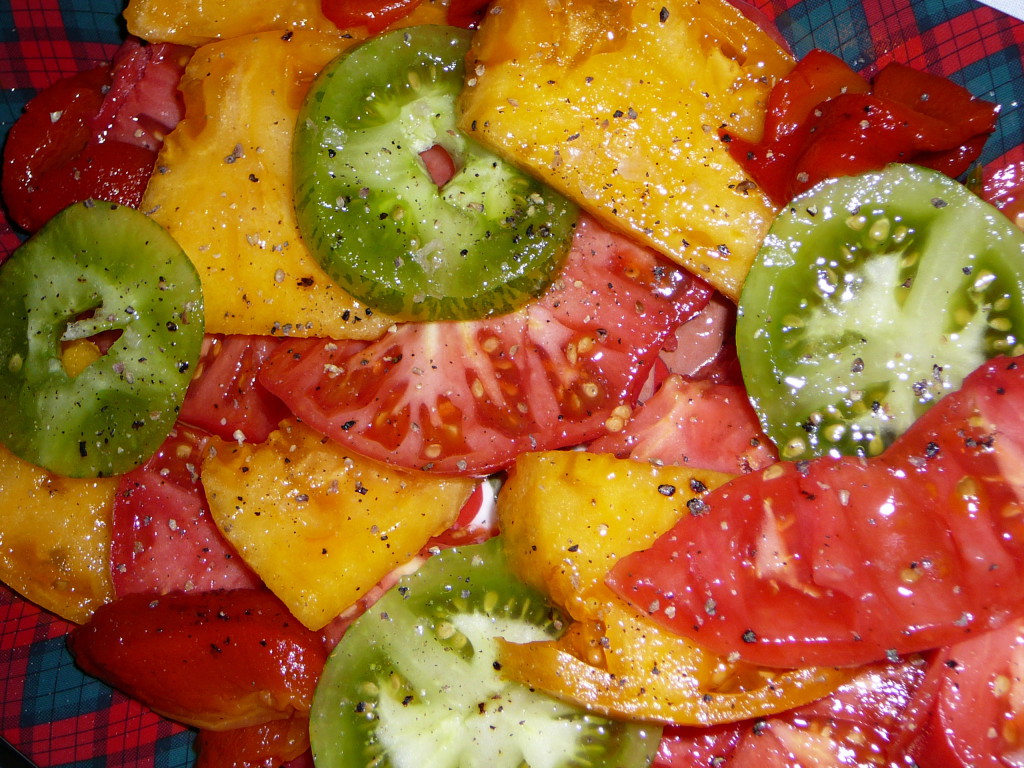 End notes to “In Tomato Fields”:
End notes to “In Tomato Fields”:
[i] Like many other fruits, tomatoes — including so-called ‘vine-ripened’ tomatoes — are typically picked under-ripe so they can survive transport – at the stage known in the industry as ‘mature green’, where they are still green in colour, but have begun to ‘break’ (i.e., they are pink over 10% of the surface) or to ‘turn’ (they are pink over 11-29% of the surface). These mature green fruits are then ripened artificially with ethylene – the gas fruits produce naturally on ripening – and refrigerated until they can be displayed on cool supermarket shelves. Reference: Temperature Climate Permaculture: http://tcpermaculture.com/site/2013/05/14/vine-ripened-tomatoes-yet-another-lie-by-modern-ag/
[ii] “Almost every country village [in South Jersey] had a cannery” in the early decades of this century, said James Turk, executive director of the Salem County Historical Society.” Quoted in “Tomato As History: A New Jersey Tale The New World Fruit Became A Universal Staple And Put Local Farms On The Food Map”, by Joseph A Gambardello, Philadelphia Inquirer, 14 March 1999.
[iii] Campbell’s was established in Camden, New Jersey, in 1869, as the Joseph A Campbells Preserves Company. Daniel Sidorick, Condensed Capitalism: Campbell Soup and the Pursuit of Cheap Production in the Twentieth Century. Cornell University ILR Press, 2009.
[iv] Daniel Sidorick, Condensed Capitalism: Campbell Soup and the Pursuit of Cheap Production in the Twentieth Century. Cornell University ILR Press, 2009. And “Campbell Soup Company”, in The Encyclopedia of Greater Philadelphia, 2013: http://philadelphiaencyclopedia.org/archive/campbell-soup-company/
[v] “In the soup factory Dorrance’s industrial engineers closely observed each task performed by workers, decreed the optimal procedure to be followed, and calculated the precise wage to be paid for each subtask.” Quoted from David Sidorick, The Encyclopedia of Greater Philadelphia. http://philadelphiaencyclopedia.org/archive/campbell-soup-company/
[vi] “The firm paid suppliers prices that left them little choice but to exploit largely immigrant farm laborers to the furthest limits possible.” Quoted from Daniel Sidorick, Condensed Capitalism: Campbell Soup and the Pursuit of Cheap Production in the Twentieth Century. Cornell University ILR Press, 2009; page 7.
[vii] Claim attributed in 1999, by The Philadelphia Inquirer, to Rutgers University tomato breeder, Steve Garrison. “Most of the so-called fresh tomatoes sold in this area when the Jerseys are not in season are picked green in Florida or California or Mexico for better shipping and ripened with the help of a hormone. The true Jersey tomato ripens on the vine, which means it benefits from a late burst of sugar. Because New Jersey is near Philadelphia and New York, the tomatoes do not have to travel far to market and should be full of flavor ….” The Philadelphia Inquirer, 14 March 1999, “Tomato As History: A New Jersey Tale The New World Fruit Became A Universal Staple And Put Local Farms On The Food Map”, by Joseph A Gambardello. http://articles.philly.com/1999-03-14/news/25512104_1_jersey-tomato-tomato-processor-fresh-tomatoes:
[viii] The first ‘Rutgers’ tomato was bred at the University from a USDA 1917 variety called ‘Marglobe’ and a Campbells-own tomato called ‘JTD’ named for its president. Reference: Daily Kos, 13 July 2012, “The Tomato Diaries: Will the real Jersey tomato please stand up?” by Keith930 Link: http://www.dailykos.com/story/2012/7/13/1109266/-The-Tomato-Diaries-Pt-II-Jersey-Shores-Edition-Will-the-Real-Rutgers-Tomato-Please-Stand-Up
[ix] “Thomas J Orton, a professor in the [Rutgers University] department of plant biology and pathology, said of the 1934 variety. “It was a groundbreaking tomato that redefined what a tomato should be and was the most popular variety in the wolrd. At one point, it represented in excess of 60 percent of all tomatoes grown commercially.” Quoted in The New York Times, May 8, 2016, “New Jersey Tomato, Victim of Modern Farming, Vies for a Comeback” by Valerie Sudol
[x] The Moreton had largely disappeared, but seed stock has been built up and Rutgers is now offering the seed for sale. “The Return of the Moreton F1 Tomato, or the Case of the Missing Parent Seed”, in Rutgers New Jersey Agricultural Experiment Station, 2016.
[xi] The Ramapo hybrid was introduced in 1968 and lost commercially less than 20 years later. It was the first of the Rutgers reintroductions of classic Jersey tomatoes that had been lost. The University had not archived the original seed, but the seed company that acquired stock from Rutgers had banked some. A seed producer in Israel was commissioned to re-grow it, and the seed for Ramapo is available again and selling to home gardeners on the east coast. Reference: August 6, 2007, Biweekly Highlights from Cooperative Extension, a unit of Rutgers New Jersey Agricultural Experiment Station. “Rediscovering the Jersey Tomato: Tomato Tasting” Link: http://njfarmfresh.rutgers.edu/pdfs/Whatsinseason8-6-07.pdf and The New York Times, “The Return of a Lost Jersey Tomato”, 23 July 2008, by Julia Moskin. Link: http://www.nytimes.com/2008/07/23/dining/23toma.html
[xii] Rutgers New Jersey Agricultural Experiment Station, What’s in Season in the Garden State: the KC 146 Tomato
[xiii] Economic Research Service of the US Department of Agriculture, US Tomato Statistics, July 2010.
[xiv] The New York Times, 5 April 1992. “The New Jersey Tomato Falls on Hard Times”, by Leo H Carney. Link: http://www.nytimes.com/1992/04/05/nyregion/the-new-jersey-tomato-falls-on-hard-times.html
[xv] Daniel Sidorick, Condensed Capitalism: Campbell Soup and the Pursuit of Cheap Production in the Twentieth Century. Cornell University ILR Press, 2009.
[xvi]The Enclyclopedia of Greater Philadelphia. “Campbell Soup Company”, by David Sidorick, 2013. http://philadelphiaencyclopedia.org/archive/campbell-soup-company/
And: The New York Times, 5 April 1992. “The New Jersey Tomato Falls on Hard Times”, by Leo H Carney. Link: http://www.nytimes.com/1992/04/05/nyregion/the-new-jersey-tomato-falls-on-hard-times.html
[xvii] Edward R. Murrow’s “Harvests of Shame” documentary about the abuses faced by farm workers in Florida, North Carolina and New Jersey, was aired on CBS during Thanksgiving, 1960. Dan Rather reported in 1995 that little had changed. http://www.cbsnews.com/news/the-growing-demand-for-fair-food/
[xviii] “The firm paid suppliers prices that left them little choice but to exploit largely immigrant farm laborers to the furthest limits possible.” Daniel Sidorick, Condensed Capitalism: Campbell Soup and the Pursuit of Cheap Production in the Twentieth Century. Cornell University ILR Press, 2009; page 9.
[xix] “Tomato As History: A New Jersey Tale The New World Fruit Became A Universal Staple And Put Local Farms On The Food Map”, by Joseph A Gambardello, Philadelphia Inquirer, 14 March 1999.
[xx] “Tomato As History: A New Jersey Tale The New World Fruit Became A Universal Staple And Put Local Farms On The Food Map”, by Joseph A Gambardello, Philadelphia Inquirer, 14 March 1999.
[xxi] State of New Jersey Department of Agriculture. New Jersey Agricultural Statistics 2015. Reported as 2,900 acres in tomato production with a production value of $38.1million, ranking 8th nationally.
[xxii] The hybrids that could stand up to these new demands were developed at North Carolina State University for the industry by Randolf Gardner and became the east coast standards by the 1990s. Reference: New Jersey Monthly, 28 July 2014. “Born Again: Rebirth of the Jersey Tomato Everyone pays lip service to the juicy Jersey tomato. Now three Rutgers scientists are close to recreating the greatest Jersey tomato of them all.” By Paula Span. [Link: https://njmonthly.com/articles/jersey-living/born-again-rebirth-jersey-tomato/ ]
[xxiii] Daily Kos, 13 July 2012, “The Tomato Diaries: Will the real Jersey tomato please stand up?” by Keith930 Link: http://www.dailykos.com/story/2012/7/13/1109266/-The-Tomato-Diaries-Pt-II-Jersey-Shores-Edition-Will-the-Real-Rutgers-Tomato-Please-Stand-Up
The New York Times, 23 July 2008, “The Return of a Lost Jersey Tomato”, by Julia Moskin. Link: http://www.nytimes.com/2008/07/23/dining/23toma.html
[xxiv] Biweekly Highlights from Cooperative Extension, a unit of Rutgers New Jersey Agricultural Experiment Station. “Rediscovering the Jersey Tomato: Tomato Tasting”, August 6, 2007.
[xxv] Biweekly Highlights from Cooperative Extension, a unit of Rutgers New Jersey Agricultural Experiment Station. “Rediscovering the Jersey Tomato: Tomato Tasting”, August 6, 2007.
From The New York Times, May 8, 2016, “New Jersey Tomato, Victim of Modern Farming, Vies for a Comeback” by Valerie Sudol: “This season, Rutgers University introduced a reinvented version of a tomato variety from 1934 that reigned unchallenged for decades. After years of plant breeding, this old-fashioned tomato with old-fashioned taste has returned as the Rutgers 250, named in honour of the university’s 250th anniversary. ‘This was the tomato that made the Jersey tomato reputation,’ Thomas J Orton, a professor in the department of plant biology and pathology, said of the 1934 variety. ‘It was a groundbreaking tomato that redefined what a tomato should be and was the most popular variety in the wolrd. At one point, it represented in excess of 60 percent of all tomatoes grown commercially.’ [Rutgers 250 is]… ‘a real retro tomato – history you can eat.’”
[xxvii] Biweekly Highlights from Cooperative Extension, a unit of Rutgers New Jersey Agricultural Experiment Station. “Rediscovering the Jersey Tomato: Tomato Tasting”, August 6, 2007.
[xxviii] Like many other fruits, tomatoes – including so-called ‘vine-ripened’ tomatoes – are typically picked under-ripe so they can survive transport – at the stage known in the industry as ‘mature green’, where they are still green in colour, but have begun to ‘break’ (i.e., they are pink over 10% of the surface) or to ‘turn’ (they are pink over 11-29% of the surface). These mature green fruits are then ripened artificially with ethylene – the gas fruits produce naturally on ripening – and refrigerated until they can be displayed on cool supermarket shelves. Reference: Temperature Climate Permaculture: http://tcpermaculture.com/site/2013/05/14/vine-ripened-tomatoes-yet-another-lie-by-modern-ag/
[xxix] New Jersey Monthly, 28 July 2014. “Born Again: Rebirth of the Jersey Tomato Everyone pays lip service to the juicy Jersey tomato. Now three Rutgers scientists are close to recreating the greatest Jersey tomato of them all.” By Paula Span.
[xxx] The Scientist, 12 October 2014, “360-Degree View of the Tomato”, by Anna Azvolinsky.
[xxxi] The Scientist, 12 October 2014, “360-Degree View of the Tomato”, by Anna Azvolinsky.
[xxxii] …especially when cooked, when their lycopenes, the most powerful antioxidant to be measured in food, are more available to our systems. Source: Sarah Raven, Good Good Food, Bloomsbury, 2016; page 142.
[xxxiii] Lee Bailey, Tomatoes. Clarkson N Potter, 1992.
[xxxiv] William Faulkner, Requiem for a Nun. Random House, 1951.
- Essence of tomato
- Fried green tomatoes
- Cheat’s aubergine parmesan with fresh tomato sauce
- Roasted tomato soup with coconut milk
- Baked winter squash with tomato, onion and Brie
- Tomato prosciutto tart
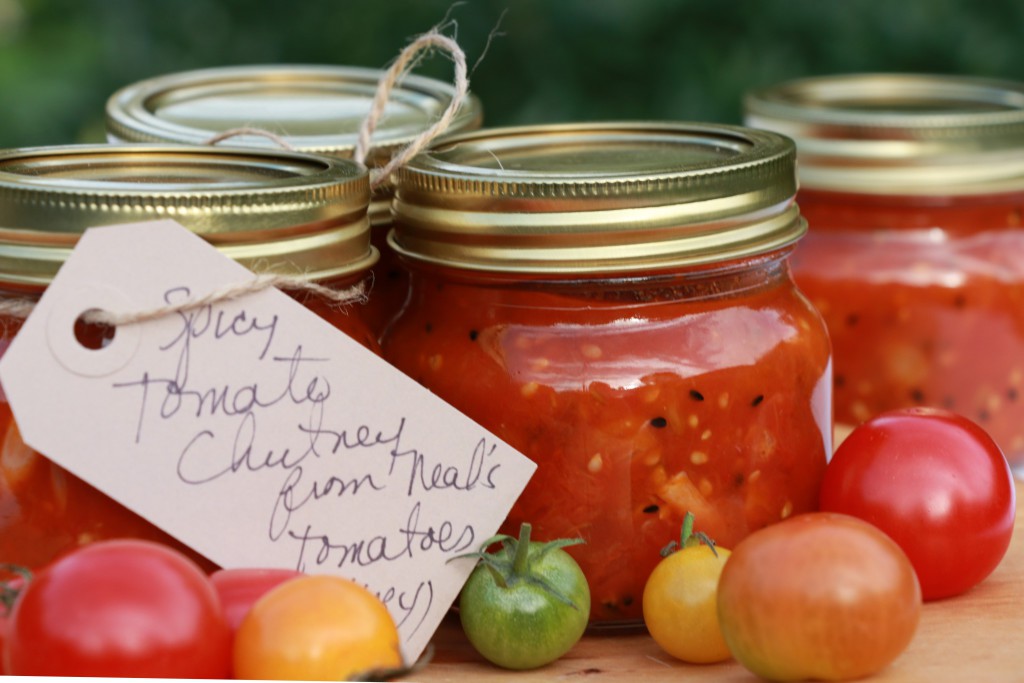
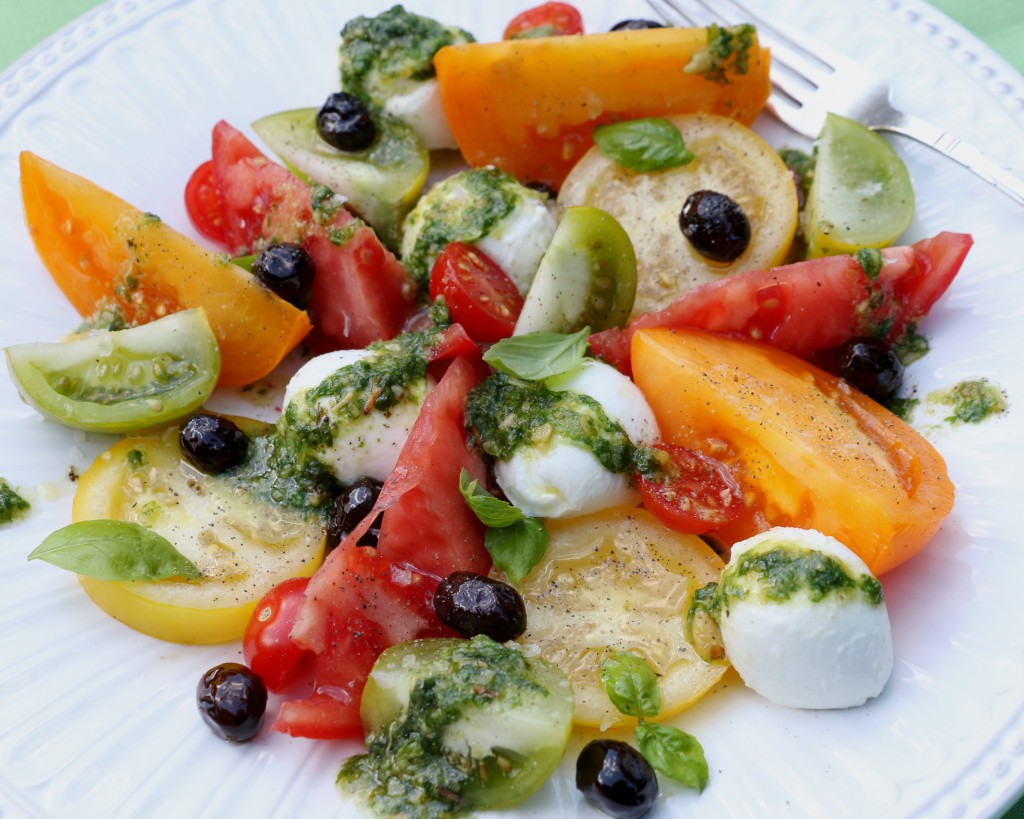
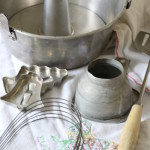

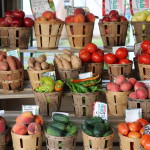

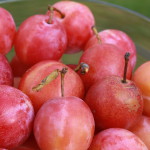
 Tour D’Argent: a remembrance of things past at today’s prices
Tour D’Argent: a remembrance of things past at today’s prices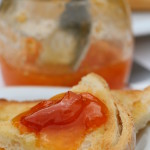 Apricots, les abricots
Apricots, les abricots I used to cook in a piggery
I used to cook in a piggery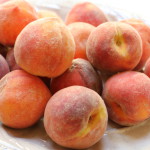

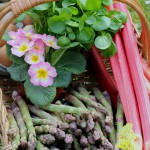


 Seed cake and story
Seed cake and story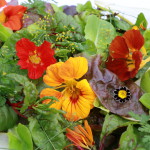
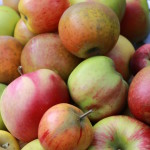


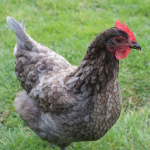

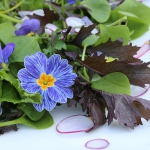


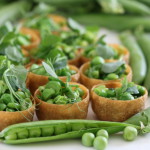


 Easter is late this year
Easter is late this year
Leave a Reply